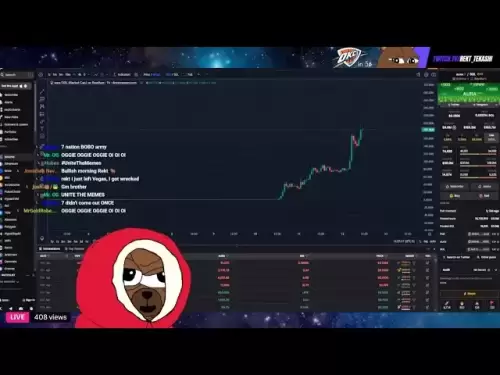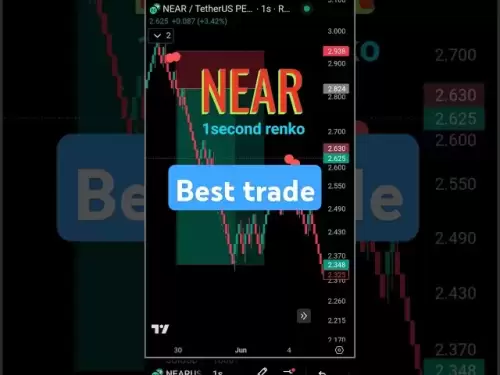-
 Bitcoin
Bitcoin $105,288.6945
-2.61% -
 Ethereum
Ethereum $2,546.9059
-7.84% -
 Tether USDt
Tether USDt $1.0004
0.05% -
 XRP
XRP $2.1438
-4.68% -
 BNB
BNB $653.2251
-1.80% -
 Solana
Solana $146.3449
-8.07% -
 USDC
USDC $0.9997
0.01% -
 Dogecoin
Dogecoin $0.1778
-5.94% -
 TRON
TRON $0.2688
-2.27% -
 Cardano
Cardano $0.6373
-7.04% -
 Hyperliquid
Hyperliquid $41.2776
-4.37% -
 Sui
Sui $3.0223
-9.71% -
 Chainlink
Chainlink $13.3280
-7.77% -
 Bitcoin Cash
Bitcoin Cash $430.6921
-2.12% -
 UNUS SED LEO
UNUS SED LEO $9.0426
1.98% -
 Avalanche
Avalanche $19.2275
-8.92% -
 Stellar
Stellar $0.2600
-5.55% -
 Toncoin
Toncoin $2.9984
-6.13% -
 Shiba Inu
Shiba Inu $0.0...01195
-5.71% -
 Hedera
Hedera $0.1566
-7.37% -
 Litecoin
Litecoin $84.6896
-5.28% -
 Polkadot
Polkadot $3.8188
-6.28% -
 Ethena USDe
Ethena USDe $1.0004
0.00% -
 Monero
Monero $311.9801
-3.66% -
 Dai
Dai $0.9998
0.00% -
 Bitget Token
Bitget Token $4.5149
-4.09% -
 Uniswap
Uniswap $7.4602
-6.13% -
 Pepe
Pepe $0.0...01088
-11.16% -
 Aave
Aave $280.9076
-8.02% -
 Pi
Pi $0.5699
-8.88%
How to predict the precise position of short-term pressure support through the order data?
Order data analysis helps predict short-term pressure and support in crypto trading by identifying clusters and volumes in the order book, enhancing trading decisions.
Jun 12, 2025 at 10:49 pm
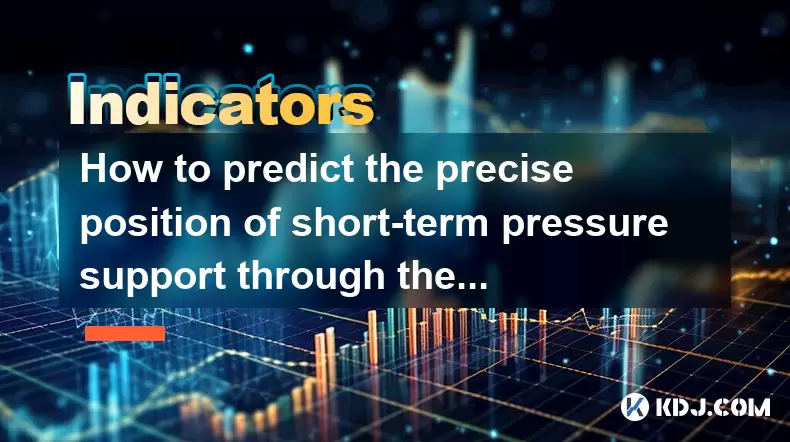
Understanding Short-term Pressure and Support in Cryptocurrency Trading
In the world of cryptocurrency trading, short-term pressure and support levels are crucial for traders looking to make quick and profitable decisions. These levels represent the points at which the price of a cryptocurrency is likely to encounter resistance (pressure) or find a base (support). Predicting these levels accurately can significantly enhance a trader's ability to buy low and sell high. One effective method to predict these levels is through the analysis of order data, which provides insights into the buying and selling intentions of other market participants.
What is Order Data?
Order data refers to the information about the buy and sell orders placed on a cryptocurrency exchange. This data includes the number of orders at various price levels, the volume of these orders, and other related metrics. By examining order data, traders can gain a clearer picture of where significant buying or selling pressure might emerge, thus helping to predict short-term pressure and support levels.
Collecting and Analyzing Order Data
To begin predicting short-term pressure and support levels, traders need to collect and analyze order data from their chosen cryptocurrency exchange. Here's how to do it:
- Access the Order Book: Most cryptocurrency exchanges provide an order book that displays all current buy and sell orders. This can usually be found within the trading interface of the exchange.
- Export the Data: Some exchanges allow you to export the order book data in a format like CSV. If this option is available, use it to get a more detailed analysis.
- Use Trading Tools: Various trading platforms and tools can help automate the process of collecting and analyzing order data. Tools like TradingView or custom-built scripts in Python can be particularly useful.
Identifying Key Levels from Order Data
Once the order data is collected, the next step is to identify the key levels that could act as short-term pressure or support. Here’s how to do it:
- Look for Clusters: Clusters of orders at specific price points can indicate potential pressure or support levels. A large number of buy orders at a particular price suggests strong support, while a cluster of sell orders indicates potential resistance.
- Analyze Order Volume: The volume of orders at different price levels is another crucial factor. Higher volumes indicate stronger potential for the price to react at those levels.
- Check the Bid-Ask Spread: The bid-ask spread can also provide clues. A narrow spread might suggest a strong and immediate reaction at a particular price level, while a wider spread could indicate less immediate pressure.
Practical Example: Using Order Data to Predict Short-term Levels
Let's walk through a practical example to illustrate how to use order data to predict short-term pressure and support levels. Suppose you are trading Bitcoin on a popular exchange and you want to predict where the price might face resistance or find support in the next few hours.
- Step 1: Access the Order Book: Open the trading interface on your chosen exchange and locate the order book section.
- Step 2: Identify Clusters: Scroll through the order book and note any significant clusters of buy and sell orders. For example, you might see a large number of buy orders at $30,000 and a significant number of sell orders at $30,500.
- Step 3: Analyze Order Volume: Check the volume of orders at these clustered levels. If there are 1,000 buy orders at $30,000 and 800 sell orders at $30,500, these levels become even more significant.
- Step 4: Consider the Bid-Ask Spread: Look at the bid-ask spread around these levels. If the spread is narrow at $30,000 and wider at $30,500, it suggests that $30,000 might act as a strong support level, while $30,500 could be a resistance level.
- Step 5: Make Predictions: Based on this analysis, you can predict that Bitcoin might find strong support at $30,000 and face resistance at $30,500 in the short term.
Using Technical Indicators to Complement Order Data
While order data provides valuable insights, combining it with technical indicators can enhance the accuracy of your predictions. Here are some indicators that can be used alongside order data:
- Moving Averages: Moving averages can help confirm potential support and resistance levels identified through order data.
- Relative Strength Index (RSI): The RSI can indicate whether a cryptocurrency is overbought or oversold, which can influence the effectiveness of identified support and resistance levels.
- Bollinger Bands: Bollinger Bands can highlight potential volatility and price movements around key levels identified from order data.
Monitoring and Adjusting Predictions
Predicting short-term pressure and support levels is an ongoing process. As market conditions change, so too will the order data. Therefore, it's essential to:
- Monitor the Order Book: Continuously check the order book for any new clusters or changes in volume that might affect your predictions.
- Adjust Your Analysis: Be prepared to adjust your predictions based on new data and market developments.
- Combine with Other Data: Use other market data and news to validate your predictions based on order data.
FAQs
Q1: Can order data be manipulated by large traders to mislead others?
A1: Yes, large traders can sometimes place large orders at specific price levels to create false impressions of support or resistance. This practice is known as "spoofing." It's important to be aware of this possibility and use other indicators to validate your findings from order data.
Q2: How often should I update my order data analysis?
A2: It depends on your trading strategy and the volatility of the market. For short-term trading, updating your analysis every few hours or even more frequently can be beneficial. For less volatile markets, daily updates might suffice.
Q3: Is order data analysis suitable for all types of cryptocurrencies?
A3: Order data analysis can be applied to any cryptocurrency traded on an exchange that provides an order book. However, the effectiveness might vary depending on the liquidity and trading volume of the specific cryptocurrency.
Q4: Can I use order data analysis for long-term trading?
A4: While order data is particularly useful for short-term trading, it can also be used to inform long-term trading decisions. However, for long-term predictions, it's crucial to combine order data with broader market analysis and fundamental factors.
Disclaimer:info@kdj.com
The information provided is not trading advice. kdj.com does not assume any responsibility for any investments made based on the information provided in this article. Cryptocurrencies are highly volatile and it is highly recommended that you invest with caution after thorough research!
If you believe that the content used on this website infringes your copyright, please contact us immediately (info@kdj.com) and we will delete it promptly.
- Bitwise CEO Predicts Bitcoin Holders Will Stop Selling Once Price Surpasses $130,000
- 2025-06-14 01:30:12
- Neo Pepe’s Revolution Begins
- 2025-06-14 01:30:12
- Aptos (APT) Token Unlock – June 12, 2025
- 2025-06-14 01:25:12
- Aptos (APT) Token Unlock – June 12, 2025
- 2025-06-14 01:25:12
- Ruvi AI Emerges as a Potential Rival to Cardano (ADA)
- 2025-06-14 01:20:12
- Market Capitalization Often Confuses Casual Investors, and Detractors Have Weaponized It Against Bullish XRP Price Predictions
- 2025-06-14 01:20:12
Related knowledge
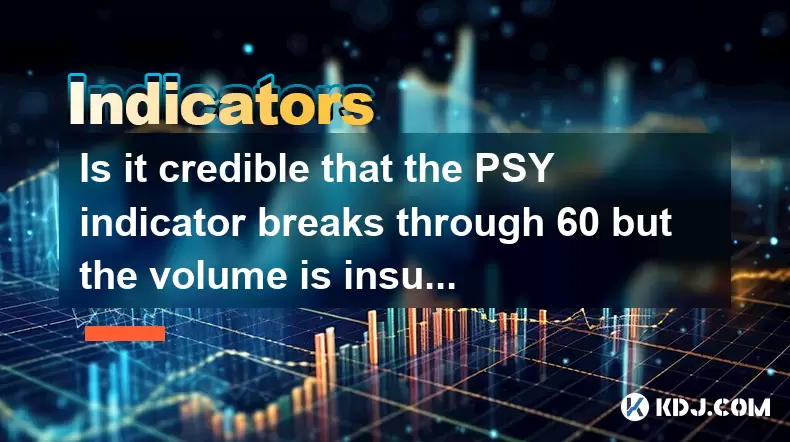
Is it credible that the PSY indicator breaks through 60 but the volume is insufficient?
Jun 14,2025 at 12:14am
Understanding the PSY Indicator in Cryptocurrency TradingThe Psychological Line (PSY) indicator is a momentum oscillator used primarily to measure the sentiment of traders and investors in financial markets, including the cryptocurrency space. It calculates the ratio of days where prices closed higher versus lower over a specified period, typically 12 o...
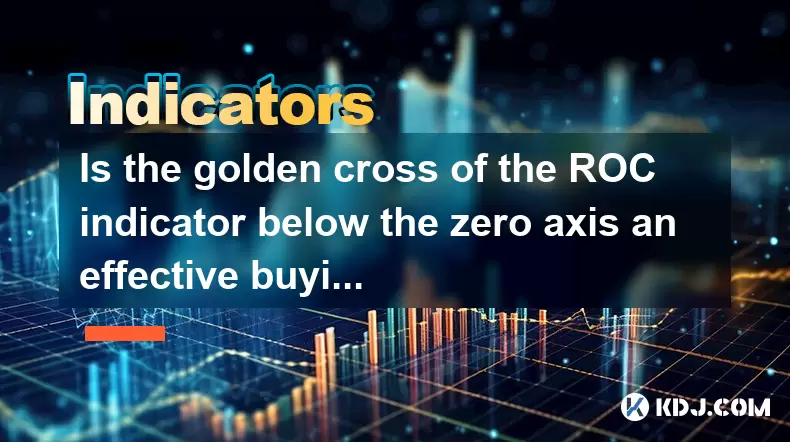
Is the golden cross of the ROC indicator below the zero axis an effective buying point?
Jun 14,2025 at 01:29am
Understanding the ROC Indicator and Its SignificanceThe Rate of Change (ROC) indicator is a momentum oscillator used in technical analysis to measure the percentage change in price between the current closing price and the closing price from a set number of periods ago. This tool helps traders assess the speed at which prices are changing, offering insi...

Will the RSI fall after the top divergence? How to improve the judgment accuracy?
Jun 13,2025 at 11:21pm
Understanding RSI and Top Divergence in Cryptocurrency TradingThe Relative Strength Index (RSI) is a momentum oscillator widely used in cryptocurrency trading to measure the speed and change of price movements. It typically ranges from 0 to 100, with levels above 70 considered overbought and below 30 considered oversold. In crypto markets, where volatil...
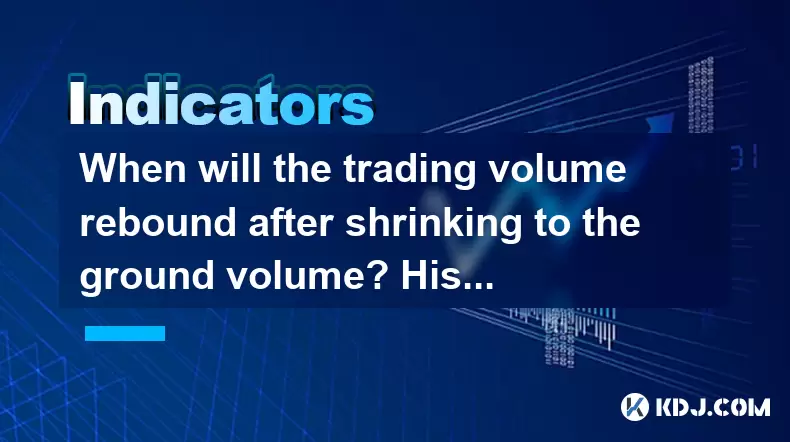
When will the trading volume rebound after shrinking to the ground volume? Historical percentile comparison method
Jun 13,2025 at 03:36pm
Understanding the Ground Volume Concept in Cryptocurrency MarketsIn cryptocurrency trading, 'ground volume' refers to a period when the trading volume of a particular asset or market drops significantly, often reaching multi-month or even multi-year lows. This phenomenon typically signals a lack of interest from traders and investors, suggesting that th...
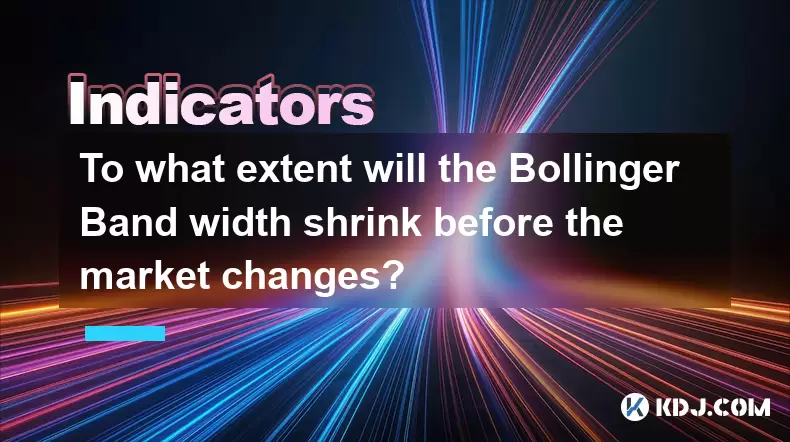
To what extent will the Bollinger Band width shrink before the market changes?
Jun 13,2025 at 06:35pm
Understanding the Bollinger Band Width and Its SignificanceThe Bollinger Band width is a critical technical analysis tool used in cryptocurrency trading to measure market volatility. It consists of three lines: a simple moving average (SMA), an upper band, and a lower band. The distance between the upper and lower bands reflects the level of volatility ...
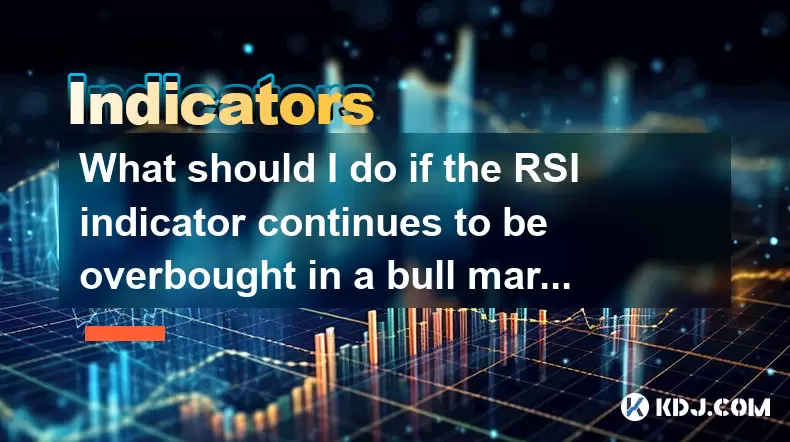
What should I do if the RSI indicator continues to be overbought in a bull market? How to adjust the overbought zone threshold?
Jun 13,2025 at 05:57pm
Understanding the RSI Indicator in a Bull MarketThe Relative Strength Index (RSI) is a momentum oscillator commonly used by traders to assess overbought or oversold conditions of an asset. In a bull market, especially within the cryptocurrency space, prices can remain elevated for extended periods. This often leads to the RSI indicator staying in the ov...

Is it credible that the PSY indicator breaks through 60 but the volume is insufficient?
Jun 14,2025 at 12:14am
Understanding the PSY Indicator in Cryptocurrency TradingThe Psychological Line (PSY) indicator is a momentum oscillator used primarily to measure the sentiment of traders and investors in financial markets, including the cryptocurrency space. It calculates the ratio of days where prices closed higher versus lower over a specified period, typically 12 o...

Is the golden cross of the ROC indicator below the zero axis an effective buying point?
Jun 14,2025 at 01:29am
Understanding the ROC Indicator and Its SignificanceThe Rate of Change (ROC) indicator is a momentum oscillator used in technical analysis to measure the percentage change in price between the current closing price and the closing price from a set number of periods ago. This tool helps traders assess the speed at which prices are changing, offering insi...

Will the RSI fall after the top divergence? How to improve the judgment accuracy?
Jun 13,2025 at 11:21pm
Understanding RSI and Top Divergence in Cryptocurrency TradingThe Relative Strength Index (RSI) is a momentum oscillator widely used in cryptocurrency trading to measure the speed and change of price movements. It typically ranges from 0 to 100, with levels above 70 considered overbought and below 30 considered oversold. In crypto markets, where volatil...

When will the trading volume rebound after shrinking to the ground volume? Historical percentile comparison method
Jun 13,2025 at 03:36pm
Understanding the Ground Volume Concept in Cryptocurrency MarketsIn cryptocurrency trading, 'ground volume' refers to a period when the trading volume of a particular asset or market drops significantly, often reaching multi-month or even multi-year lows. This phenomenon typically signals a lack of interest from traders and investors, suggesting that th...

To what extent will the Bollinger Band width shrink before the market changes?
Jun 13,2025 at 06:35pm
Understanding the Bollinger Band Width and Its SignificanceThe Bollinger Band width is a critical technical analysis tool used in cryptocurrency trading to measure market volatility. It consists of three lines: a simple moving average (SMA), an upper band, and a lower band. The distance between the upper and lower bands reflects the level of volatility ...

What should I do if the RSI indicator continues to be overbought in a bull market? How to adjust the overbought zone threshold?
Jun 13,2025 at 05:57pm
Understanding the RSI Indicator in a Bull MarketThe Relative Strength Index (RSI) is a momentum oscillator commonly used by traders to assess overbought or oversold conditions of an asset. In a bull market, especially within the cryptocurrency space, prices can remain elevated for extended periods. This often leads to the RSI indicator staying in the ov...
See all articles





















